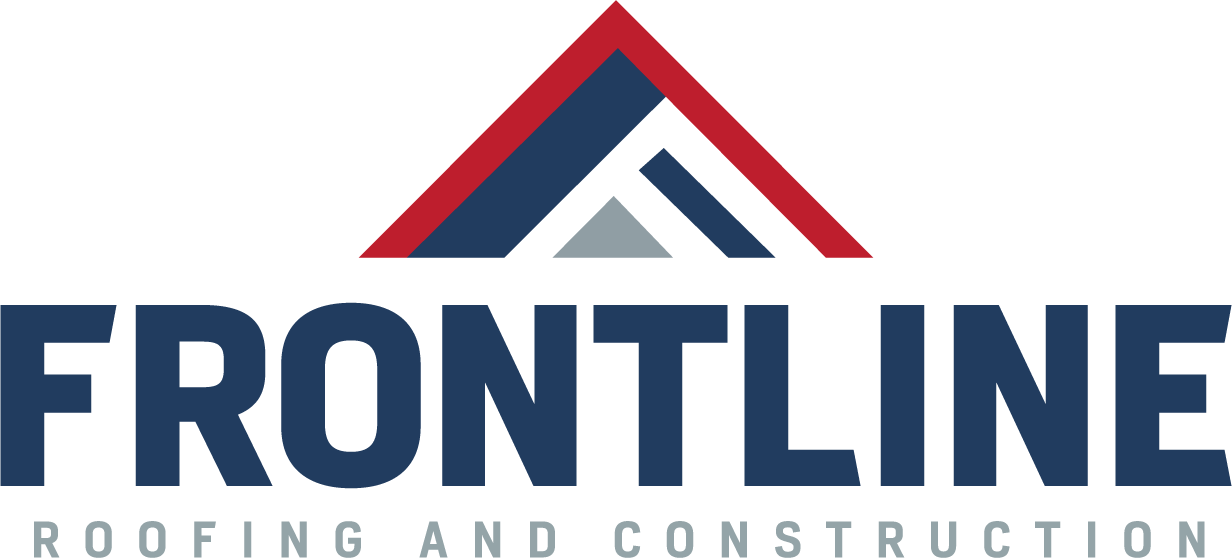How to Identify a Roof Leak Before It Causes Major Damage
Your roof is your home’s first line of defense against the elements. But like anything exposed to time, wind, rain, and sun—it wears down. The good news? Roof leaks rarely start as disasters. Most begin as small, manageable issues that can be caught early—if you know what to look for.
Catching a leak before it spirals into major water damage can save you thousands in repairs, not to mention protect your health and home’s structural integrity. In this blog, we’ll walk you through how to identify a roof leak before it becomes a major problem—and how Frontline Roofing & Construction can help.
1. Start in the Attic: The Frontline of Leak Detection
The attic is often the first place where a roof leak reveals itself. That’s because it sits just below your roof’s surface and is usually unfinished—making leaks easier to spot.
What to look for:
Damp insulation or soggy wood
Water stains or discoloration on rafters
Musty smells or obvious mold
Visible light shining through the roof boards
If your attic smells earthy or feels unusually humid, that’s a red flag. Mold and mildew thrive in dark, moist environments, and their presence often indicates a slow leak.
2. Ceiling and Wall Stains: A Clear Sign Something’s Off
Notice a brown or yellow stain on your ceiling or wall? Don’t ignore it. It might be small, but it’s rarely a cosmetic issue—it’s often a sign of water coming in from above.
Key clues:
Discoloration rings that grow over time
Peeling or bubbling paint
Sagging or drooping drywall
These signs suggest that water is traveling down from your roof through insulation, eventually hitting your ceiling or walls.
3. Examine Your Shingles from the Ground (or Safely from a Ladder)
Damaged or missing shingles are one of the most common culprits behind roof leaks. They’re your roof’s armor—and once they’re compromised, the rest of the structure becomes vulnerable.
Warning signs:
Shingles that are curled, cracked, or lifted
Bare patches where shingles used to be
Shingle granules collecting in gutters (they look like coarse black sand)
Wind, heavy rain, and hail can all batter your shingles over time. Regular visual inspections can help you catch problems early.
4. Check the Flashing and Roof Features
Flashing is the thin metal installed around roof transitions—chimneys, vents, skylights, and valleys. Its job is to seal these vulnerable areas. But flashing can rust, warp, or detach over time.
Look for:
Rust spots or corrosion
Loose sections around chimneys or skylights
Cracks in caulking or sealants
If your roof has a lot of “features” like skylights or dormers, it has more potential weak spots. These should be checked regularly, especially after a big storm.
5. Inspect Your Gutters and Downspouts
Believe it or not, your gutters play a big role in roof health. When clogged, they overflow, pushing water under your shingles and into your home.
Here’s what to check:
Leaves, twigs, or debris clogging gutters
Loose or sagging gutter sections
Water stains on siding near downspouts
Clean your gutters at least twice a year—more if you have heavy tree cover.
6. Watch for Mold, Mildew, and Musty Smells
Moisture that seeps into your walls or attic will eventually foster mold. That’s not just a roofing problem—it’s a health hazard.
Signs of mold due to a roof leak:
Black or green spots on ceiling or walls
Persistent mildew smell indoors
Worsening allergies or respiratory symptoms
Mold grows fast. If you see or smell it, act quickly.
7. When in Doubt, Get a Professional Roof Inspection
Sometimes, the signs of a leak are subtle. If you suspect a problem but can’t find the source, it’s time to call in the pros. A licensed roofing contractor like Frontline Roofing & Construction has the tools and experience to assess the situation thoroughly.
We use thermal imaging, moisture meters, and hands-on evaluations to pinpoint leaks at their source—before they become a headache (or a bucket in your living room).
Why Early Leak Detection Matters
Saves money: Fixing a small leak costs far less than major water damage restoration.
Prevents health issues: Mold and mildew can seriously impact your indoor air quality.
Protects your structure: Water can weaken beams, joists, and ceilings.
Preserves insulation: Wet insulation loses effectiveness and leads to higher energy bills.
Maintains home value: Water damage lowers resale value and can stall real estate transactions.
Need Help Now? Contact Frontline Roofing & Construction!
If you've seen any of the warning signs above—or just want peace of mind—don't wait.
Contact Frontline Roofing & Construction today for a free roof inspection.
Our team is trained to spot leaks before they spiral out of control. Whether you're dealing with a minor drip or a full-blown roofing emergency, we’ve got your back with honest advice, high-quality repairs, and excellent customer service.
Contact us today to schedule a consultation—your roof (and wallet) will thank you.
Conclusion: Prevention Is Always Cheaper Than Repair
Your roof may seem solid from the outside, but a hidden leak can wreak havoc long before you see the first droplet. By staying proactive—checking your attic, shingles, flashing, and gutters—you can stop a small issue from turning into a costly nightmare.
And remember: You don’t have to go it alone. Whether you need a quick inspection or major repair, Frontline Roofing & Construction is here to help protect your home—one shingle at a time.


